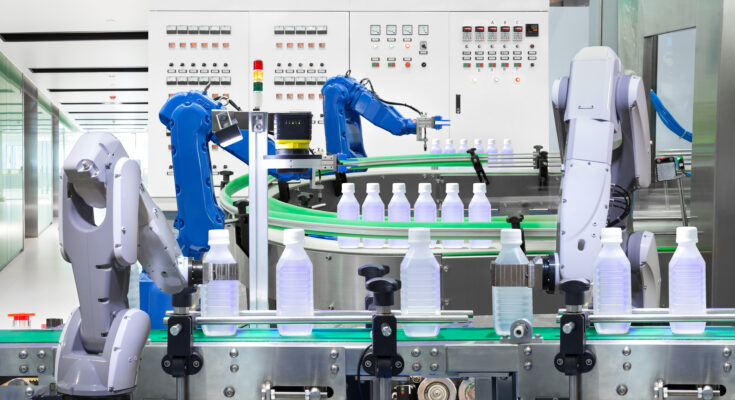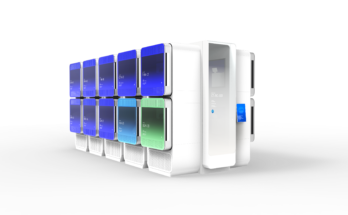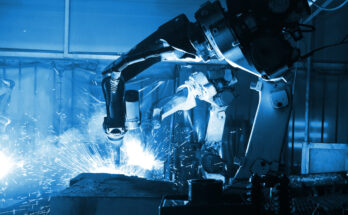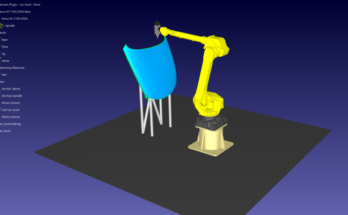Looking to improve your operations with a robot but don’t know where to start?
Which applications are going to be the best for your specific business?
Which applications are reliable in the plastics industry?
Engineers are using robots in the plastics industry for years and adoption continues to grow. According to a recent study, plastics is currently one of the top industries for robotics growth.
A variety of potential robotic applications could be beneficial for your company. But, it can sometimes be difficult to know whether you are making a good decision when you are considering a new robotic application.
Would it be useful to see applications that have already been shown to work in your industry?
What Holds Companies Back from Adopting Robots in Plastics Industry
People often have reservations when they are considering robotic automation, particularly if they haven’t deployed robots in their company before.
Even if you recognize the benefits that a robot could bring to your business, you might still be unsure. Maybe you have limited space available for a robot. Maybe you worry about not having enough robotic skills in-house. Or maybe you are concerned that robots might displace people from their jobs.
All of these worries are understandable. However, they are not always realistic.
These days, there are robots available for almost any task and any need. Solutions exist that allow you to mitigate most doubts that you might have right now.
How Robotics is Changing the Plastics Industry
Robots have been used for a long time in the plastics industry. As far back as the 1980s, they were already being used in larger production facilities for tasks that included material handling, machining, and gluing.
Now, 40 years later, robots are well established in some plastics businesses and are less utilized in others. In particular, smaller plastics companies that previously relied on manual or offshore labor are now recognizing the benefits of using robots in their operations.
Robots bring a wealth of benefits for companies in the plastics industry, including higher productivity, better consistency, longer working hours, and safer working conditions for human workers.
5 Proven Ways the Plastics Industry Can Use Robots
There are many good robot applications that you can deploy in a plastics company. In fact, most of the applications that we mention elsewhere on this blog are just as applicable to plastics as they are to any other industry.
However, here are 5 common applications that utilize robots, with some real-world examples:
1. Injection Molding
A common task for robotics is injection molding. This involves steps like interfacing with the injection molding machine, loading the machine, and cleaning up the workpieces after the molding.
One example of an injection molding robot is shown in this video from Limac Formplast in Sweden. The cell employs an ABB IRB 1600 to perform a series of tasks in the injection molding process.
In the video, Anders Granstrand from integration company Animex explains how they are seeing a trend towards smaller companies deploying such automation solutions within the plastics industry.
2. Blow Molding
A related application is blow molding. This process is used to create plastic bottles — amongst other things — and robots are a good option for handling those bottles after the blow molding has been completed.
This video shows an industrial robot with a custom end effector being used to handle large water bottles after they have been formed in a blow molding machine. Such applications save human workers from performing back-breaking manual labor for hours on end, which saves them from repetitive strain injuries (RSI).
3. Plastic Welding
Robots are a reliable option for many different types of welding, including spot welding and arc welding of metals. They are equally suited to plastic welding processes and have been successfully deployed in various businesses.
This video shows a particular plastic welding process as performed by an industrial robot. This improves the weld quality and consistency. As with other types of robotic welding, it can also reduce the amount of wastage.
4. Sorting
There are plenty of items to be sorted in a plastic manufacturing business. Robots provide a good option for consistently sorting products at high volume and don’t need to take up too much space, a common concern in the plastics industry.
This video shows an application employing SCARA robots, which are popular in the plastics industry due to their low space footprint. It shows Frisbees being picked and placed onto a conveyor.
5. Painting
Painting is a necessary job for many plastic products. It has some specific requirements when done robotically. For example, for some types of painting, you should ensure that you have a robot that is explosion-proof because of the flammable atomized paint. For this reason, there are dedicated painting robots available on the market.
This video shows a robot spray-painting plastic laptop cases.
Which Robot Task to Start With and How
These 5 examples are only a few of the many robot applications that you could employ in your business.
But, which should you choose?
It’s a good idea to start with a task that is relatively simple for you to deploy and will give you a quick return on investment. From then, you can move to more complex applications.
You can make your deployment even easier by choosing the right programming system. A good robot programming tool will reduce the time that you spend deploying the robot and allow you to update your robot’s programming even if you don’t have extensive robotics experience.
For example, painting is a perfect task for a handheld robotic programming tool like the RoboDK TwinTrack. This tool allows you to track the desired path with your hand, which the robot will then replay without requiring any extra programming.
For other tasks, a good offline programming system can help you to reduce downtime and makes programming easier than with conventional programming methods.
Which task would be most useful in your business? Tell us in the comments below or join the discussion on LinkedIn, Twitter, Facebook, Instagram, or in the RoboDK Forum.




